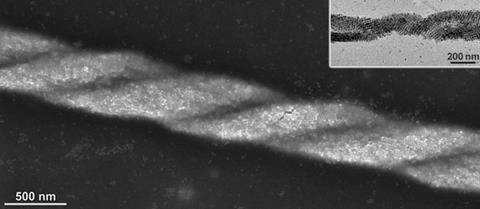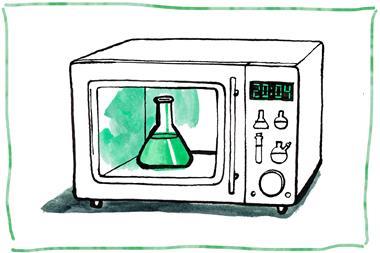Tiny cubes of magnetite form superstructures under a magnetic field

Scientists have been coaxing nano-sized cubes of magnetite (Fe3O4) into larger, more complex structures like helices without using a template by exposing them to a magnetic field.
A team led by Rafal Klajn at the Weizmann Institute of Science in Israel found that by varying the density of the cubes and the size and direction of the magnetic field they can control the kind of structure the cubes self-assemble into, which depends on the interplay between intermolecular forces and magnetic interactions. Under an increasing magnetic field the nanocubes line up to make a ‘belt’, while under a constant magnetic field at high density they curl round and form a helix. Single helices tend to clump together to make double helices (like the rope-like structure shown above) or even triple helices.
Although at the moment there is no obvious use for the structures, the team say they could have interesting magnetic properties. They are now exploring the effects of using other magnetic nanomaterials, such as nickel or iron nanoparticles, and decorating the nanocube surfaces with functional ligands to see what other shapes can be made.












No comments yet